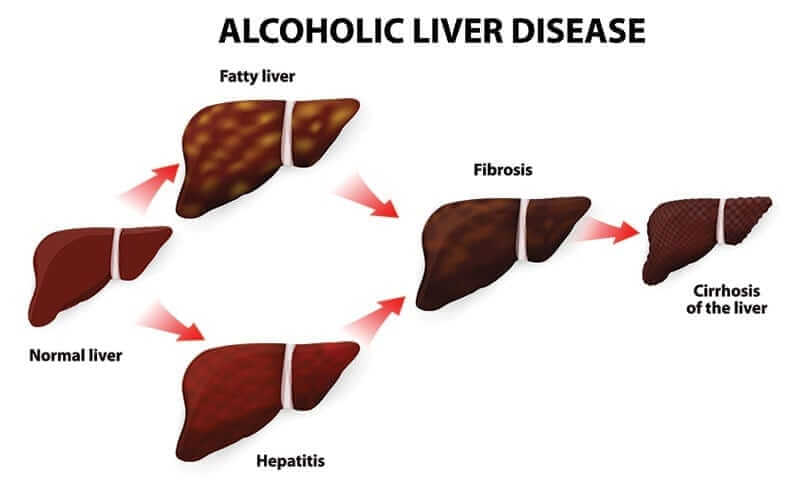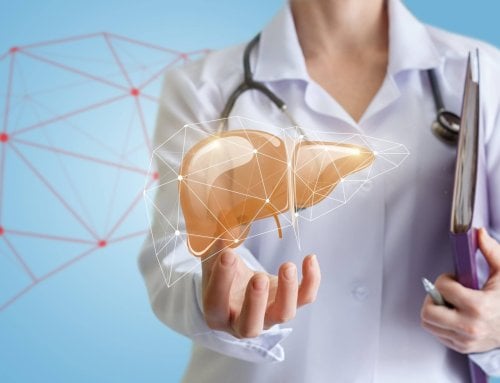The American College of Gastroenterology released new guidelines on liver chemistry tests in December 2016. Changed level recommendations were included for ALT- alanine aminotransferase, AST- aspartate aminotransferase, and alkaline phosphatase and bilirubin levels. In the past, ALT levels were accepted at a range from 30-40 IU/L and up to 70-80 IU/L while being hospitalized (body under stress). The new acceptable levels are 19-25 IU/L for women and 29-33IU/L for men. The vast change in “normal levels” of liver enzymes were updated since “multiple studies have demonstrated that if you have ALT levels even innocuously elevated, your risk of liver related death is significantly higher” according to Paul Kwo, MD from Stanford University. Liver disease can stem from alcohol, viral hepatitis A, B or C, genetic disorders, liver injury, drugs, supplements, Lyme disease and non-alcoholic fatty liver disease – NAFLD. Liver disease can often tell us about your overall health and liver function tests should be part of the work up utilized by your MD. What does this all mean for people with type 2 diabetes?
What Does the Liver Do?
The liver turns food into nutrients and filters toxins from the blood. The toxins include alcohol, medications, supplements, pollutants and insecticides. When the fat content of the liver reaches 10%, due to weight gain especially around the middle section and in visceral organs (internal fat), the spongy texture of the liver becomes coarse and the function declines. Liver problems begin.
Non-Alcoholic Fatty Liver Disease – NAFLD
Elevated ALT levels are common in people with pre-diabetes or diabetes and are often the first documented abnormal lab test, even prior to elevated fasting blood sugars or A1C values. NAFLD is common worldwide but much more prevalent in Western societies. It is the most common form of liver disease in our country. There are 100 million cases in the US which equals 25% of the population. It is more common in men, Hispanics and people in their 40s-50s and then increases in those over 60. NAFLD is not cured, similar to diabetes, but can be reversed with life style changes.
Non-Alcoholic Steatohepatitis – NASH
This can occur from 10-20% in those with NALFD. NASH is much more serious and can cause severe liver inflammation. It can create scarring of the liver, irreversible damage, cirrhosis and eventual liver failure. NASH can take years to develop and may be a major cause of liver cancer. People with failing livers will require liver transplants.

What Can Cause NAFLD?
It is very common in people who have metabolic syndrome. Metabolic syndrome consists of insulin resistance where cells do not respond adequately to insulin, central obesity, high blood pressure, high triglycerides and a large waist circumference of over 35 or more inches for a woman and 40 inches or more in a man. NAFLD is more prevalent in obese or overweight people, even those who do not have metabolic syndrome. Certain medications can increase the risk including: steroids, anti-viral drugs, Methotrexate, Tamoxifen or Amiodarone.
What are the Possible Signs and Symptoms?
It could result in upper right quadrant pain, fatigue, sensitive and painful sensations when the liver is touched. Often there are no symptoms since only a small percentage of your liver needs to be functioning.
What May Play a Role in its Development?
Uncontrolled elevated blood sugars, high blood fats, PCOs (polycystic ovarian syndrome), sleep apnea, hypothyroidism, an underactive pituitary gland and your gut bacteria concentration.
How is it Diagnosed Besides Having an ALT/AST Blood Test?
Usually a CBC is ordered along with an A1C, lipid profile, liver ultrasound, CT scan or MRI. Usually, the last test considered is a liver biopsy.
What Can Be Done Once it is Diagnosed?
There are no formal drug treatment plans for NAFLD. As with diabetes, any weight loss is beneficial but losing up to 10% of your total body weight would be excellent. Talk to your physician about being vaccinated against Hepatitis A or B to preserve existing liver function. At this point, there is no vaccination available for Hepatitis C. Luckily, there are current treatment plans for Hepatitis C but they may be lengthy, extremely expensive and cause unpleasant side effects. Never share razors or razor blades, eye make-up, toothbrushes or needles. Use condoms for sexual protection. Blood transfusions are now tested for hepatitis, but were a cause for concern in the past. Do not eat raw or under-cooked sea food especially if you have an autoimmune disease in addition to liver issues.
What is Helpful to Lower Problems of NALFD/NASH?

What Should You Avoid?
Watch out for medications containing acetaminophen such as Tylenol which may affect liver function especially if you drink alcohol. Look at ingredients in cold and flu remedies as well. Eliminate alcohol which puts your liver into overdrive and adds empty calories to your intake. Avoid trans-fats (slowly being erased from packaged foods) and high fructose corn syrup which is contained in soda and other foods. Avoid or limit fast food due to fat content and processing. Limit overall saturated fats and sugar just like you should with diabetes. Small changes can make a difference. Avoid heavily processed foods which are stripped of nutrients including white bread, chips, cookies and pastries.
What Else Should I Add?
Talk to your health care provider about taking a statin medication like Lipitor or Crestor for hyperlipidemia. Some physicians are now adding a statin to those who suffer with NAFLD. Ask your provider about supplementation with Vitamin E which may reduce inflammation as well as Omega 3 fatty acid supplements for improved liver health. Have your Vitamin D levels measured and if deficient take a liquid supplement with physician approval. Consider gastric sleeve or bypass surgery if you meet the criteria since “weight loss leads to improvement or resolution of NASH in around 80% of the people.”
Liver disease is common in people with diabetes. Find out what the most common problems are and what you can do to avoid them and remain healthy!
Diabetes affects everyone in one way or another. New information is constantly being offered to keep you healthy and your diabetes better controlled. Stay aware and ask questions!
Have a question or comment? Then post below, no registration required. I would love to hear from you!
NOTE: Consult your Doctor first to make sure my recommendations fit your special health needs.












Leave A Comment